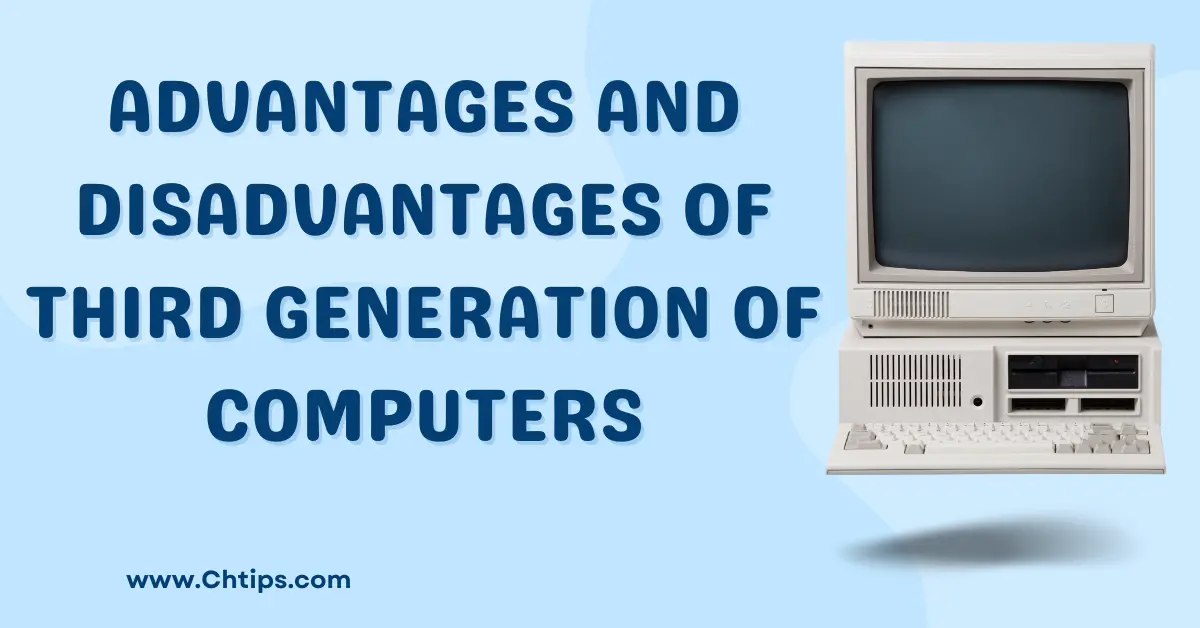The importance of computers is known to everyone. The systematic development of computers is called as “Generation of computers”.
In today’s generation, the computer plays a vital role in all sections of human society.
All the tasks and operations which used to take long hours can be accomplished with the help of a computer within a few clicks.
The development of computers is everlasting.
There are several Advantages and Disadvantages of Third Generation of Computers discussed in this article.
What is the Third Generation of Computer Systems
The timeline of the 3rd generation of computers is between 1964 to 1971.
In this generation of computers, Integrated circuits [ICs] were used instead of transistors, eventually increasing the overall functionality and performance of the computer system.
The development of the 3rd generation of computers was far more advanced compared to the second generation of the computer system.
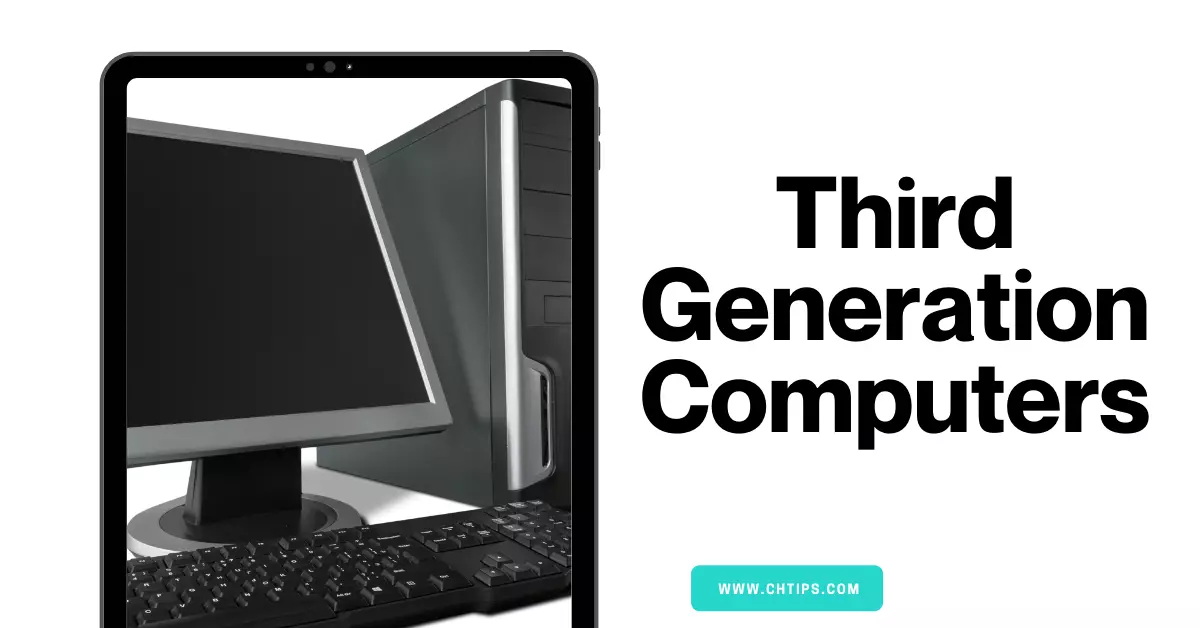
The Integrated Circuit was invented by Jack Kilby, an electrical engineer from Texas Instrument Company, on 12th September 1958.
The invention of IC was a stepping stone toward the further development of the computer system.
The ICs made computer systems more compact in shape and size; also, they were comparatively faster than the second generation of computers.
Due to enhanced speed and design, they became more popular, which increased their efficiency and reliability.
3rd generation computers were easy to maintain and produced less heat and energy.
This generation of computers extensively used operating systems also utilized high-level programming languages like COBOL and FORTRAN.
The ICs are extensively used and utilized in all modern electronic devices due to their higher efficiency rate with more advanced and powerful performance.
These ICs have overall enhanced the performance of electronic devices and computer systems.
They can be installed on a small piece of PCB [Printed Circuit Board].
The PCB is made and manufactured with a thin sheet of non-conductive material from plastic, copper, and aluminum foil.
Integrated Circuit [IC] can be programmed in a unique way to derive necessary results.
Advantages and Disadvantages of Third Generation of Computers
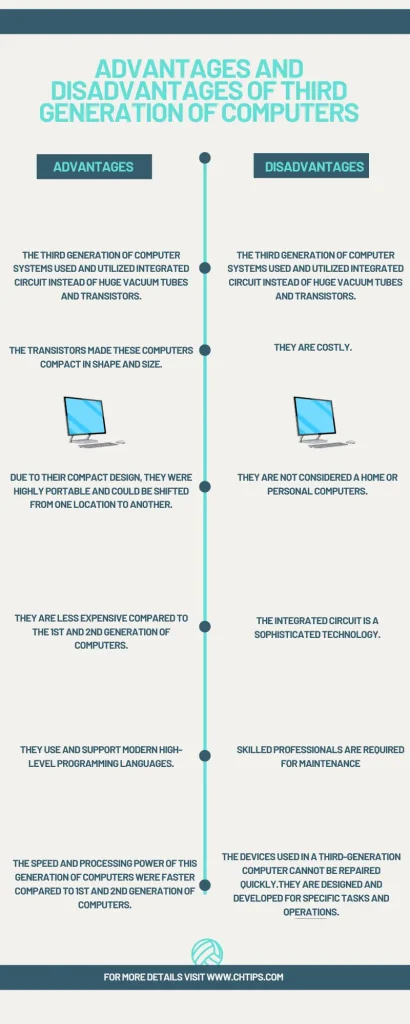
What are the Five Generations of Computer Systems?
- First Generation of Computer (1940-1956)
- Second Generation of Computers(1956-1963)
- Third Generation of Computers(1964-1971)
- Fourth Generations of Computers:: ( 1971-To 2000)
- Fifth Generations of Computers (Present and Beyond)
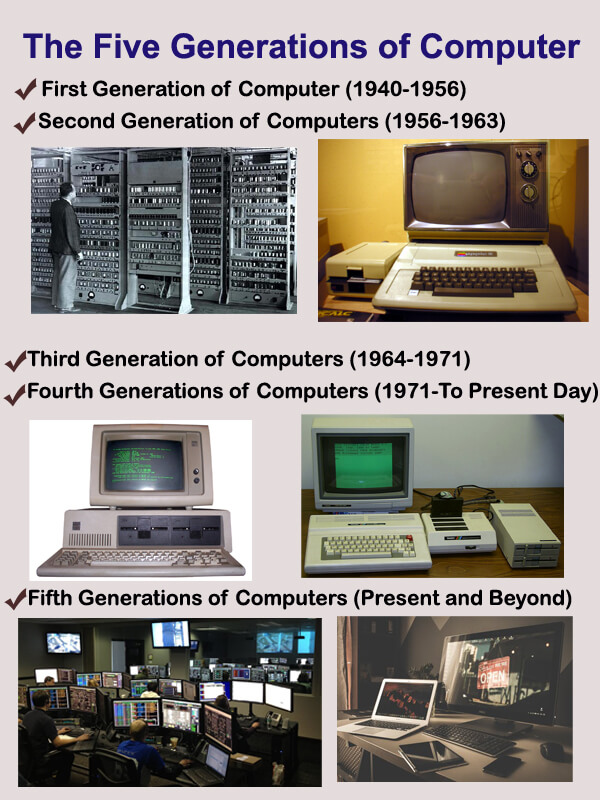
Benefits and Advantages of Third Generation of Computers
- The third generation of computer systems used and utilized Integrated circuits instead of huge vacuum tubes and transistors.
- The transistors made these computers compact in shape and size.
- Due to their compact design, they were highly portable and could be shifted from one location to another.
- They are less expensive compared to the 1st and 2nd generation of computers.
- They consumed less electricity.
- They generated less heat and energy.
- They are multitasking and multiprogramming machines.
- They are reliable and efficient.
- They use and support modern high-level programming languages.
- The speed and processing power of this generation of computers were faster compared to 1st and 2nd generation of computers.
- They had more advanced secondary storage mediums.
- They can be easily programmed using languages like COBOL, FORTRAN, PYTHON, etc.
- They require less maintenance.
- They used and utilized secondary storage devices for storing information and data.
Drawbacks and Disadvantages of Third Generation of Computers
- The design and architecture are very complex.
- The use of Air conditioners is not mandatory.
- They are costly.
- They are not considered home or personal computers.
- The Integrated Circuit is a sophisticated technology.
- Skilled professionals are required for maintenance
- The components and devices are expensive.
- The devices used in a third-generation computer cannot be repaired quickly.
- They are designed and developed for specific tasks and operations.
Characteristics of Third Generation of Computers
- IC {Integrated Circuit} was used in the third generation of computers.
- Third-generation computers are more reliable and efficient compared to 2nd generation computers.
- Compared to old second-generation computers, they can be installed and accommodated in a small room.
- They are enabled with multitasking and multiprogramming.
- The main memories in 3rd generation computers were developed to hold crucial data and information for faster processing, increasing the speed.
- High-Level Programming languages were used like FORTRAN and COBOL.
- They produce less heat and energy compared to other generations of computers.
- VLSI {Very Large Scale Integration} and ULSI {Ultra Large Scale Integration} chips were used for compact design.
Examples of Third Generations of Computers
- IBM-360 Series
- Honeywell – 6000 series
- PDP (Personal Data Processor)
- IBM-370/168
- TDC-316
- UNIVAC 1108
- ICE
- PDP-8
- PDP-5
- PDP-1
- Barose-5700/6700/7700
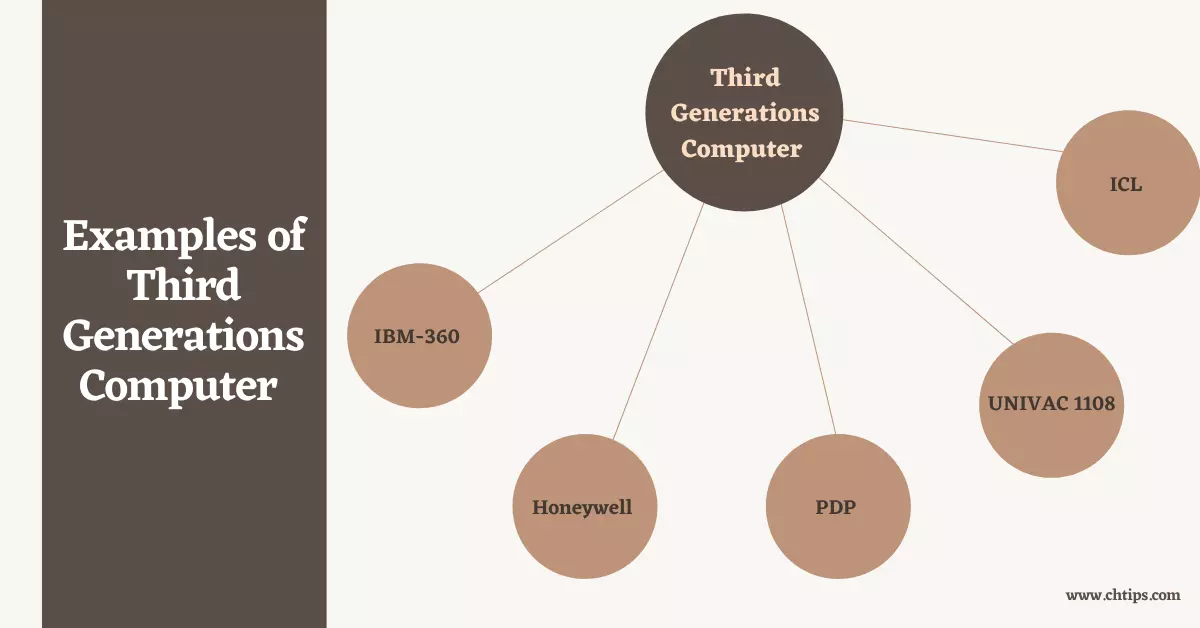
Features of 3rd Generation of Computers
- The third-generation computers are compact.
- They are highly portable and can be easily shifted from one location to another.
- They are designed and developed to achieve specific tasks and operations.
- They require huge maintenance.
- Their speed increased from microseconds to nanoseconds.
- They were also used as commercial products.
- They used to input and output devices like keyboards and monitors.
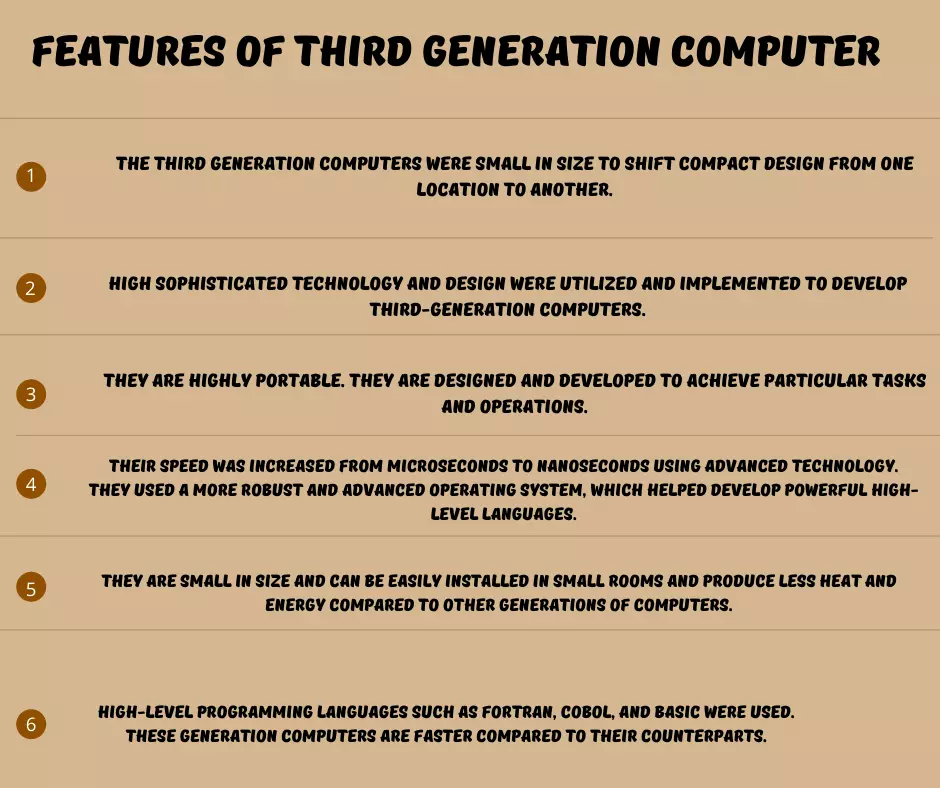
Third Generation of Computer Systems [YT]
All Generations of Computer Systems [1st to 5th]
| # | Computer Generations | Timeline | Hardware |
| 1 | First Generation of Computer | 1940-1956 | Vacuum Tubes |
| 2 | Second Generation of Computer | 1956-1963 | Transistor |
| 3 | Third Generation of Computer | 1964-1971 | Integrated Circuit (I.C.) |
| 4 | Fourth Generation of Computer | 1971-1980 | Microprocessor |
| 5 | Fifth Generation of Computer | 1980- Till Now | Artificial Intelligence |
Difference Between Third and Fourth Generation of Computer
Related Articles
- Advantages and Disadvantages of Computer
- Advantages and Disadvantages of Fifth Generations of Computer
- Advantages and Disadvantages of First Generation Computer
- Characteristics and Features of Third Generation Computer
- What is Versatility In Computer System
- Essential Attributes of Good Software
- Smallest Unit of Computer Memory Storage
- How Do Computers Works at the Most Basic Level
- 12+ Characteristics of Fourth Generations of Computer
- Advantages and Disadvantages of Fifth Generations of Computer
- What are the Five Generations of Computer System?
- Explanation on a Brief History of Computers
- 10 Characteristics and Features of Second Generation Computer
- What are the Five Generations of Computer System?
- What are the Functions of BIOS in Computer
- 5 Different Types of URLs
- 13+ Advantages and Disadvantages of Memory Card
- Advantages and Disadvantages of Second Generations of Computer
- Fourth Generation of Computers With Characteristics, Advantages, Examples and Uses
- 11 Differences Between Second Generation and Third Generation Computer
- Differences Between First and Second Generation of Computers
- Advantages and Disadvantages of Fourth Generations of Computer
- Differences Between Third and fourth Generation of Computers
- Advantages and Disadvantages of Supercomputers
- Computer Basic Tutorials
Frequently Asked Questions [FAQs]
When Was the 3rd Generation of Computers Invented?
The period of the third generation was from 1965-1971.
Who Invented Third-Generation Computers?
The main component of the third generation of the computer was IC and it was invented by Jack Kilby
3rd Generation of Computer Used?
The Third Generation of Computer Used Integrated Circuits [ICs]
Timeline of the Third Generation of Computer
1965-1971.
Which Language Was Used in the Third Generation of Computers?
They used high-level programming languages.
Define the Speed of Third Generation of Computer.
The speed of the 3rd generation of computers is around 100 nana seconds.
Get In Touch
I have also written and compiled some articles on computers and telecommunications, and please go through them.
I hope you will like reading it.
I hope that all the questions and queries related to Advantages and Disadvantages of Third Generations of Computer with Benefits and Drawbacks of 3rd generations of computer have been answered here.
If you have any questions related to the Pros and Cons of the 3rd generation of computers.
Don’t hesitate to contact me, and if you need to add, remove, or update anything from the article, please let me know in the comment section or via email.
I will be more than happy to update the article. I am always ready to correct myself.
I was hoping you could share this article with your friends and colleagues; this motivates me to write more on related topics.
!!! Thank You !!!
